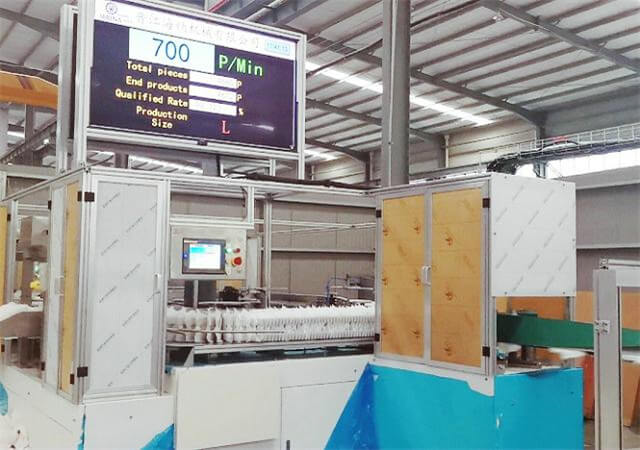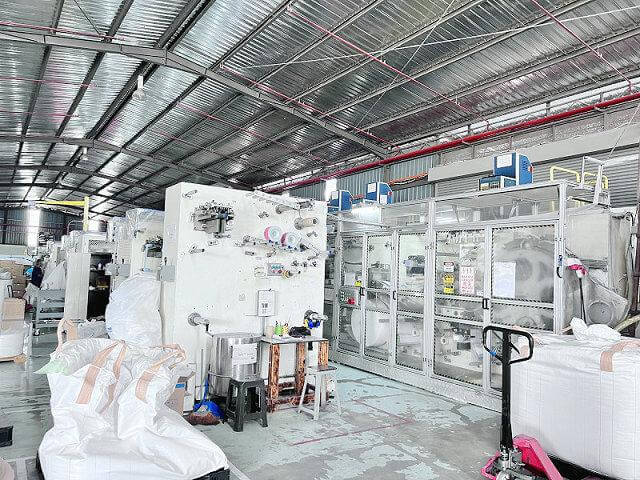Author:Haina Machinery Factory FROM:Diaper Machinery Manufacturer TIME:2023-10-16
The sanitary pad making machine is a revolutionary invention that has greatly improved the production of sanitary pads and contributed to women's health and hygiene. This machine has found wide applications in various settings, including commercial manufacturing, community-based initiatives, and humanitarian efforts. In this article, we will explore the diverse applications of the sanitary pad making machine and its impact on society.

Commercial manufacturers of sanitary pads have embraced the use of the sanitary pad making machine due to its efficiency and cost-effectiveness. This machine allows for high-speed production, ensuring a consistent supply of quality sanitary pads. With its automated features, manufacturers can reduce labor costs and increase their production capacity, meeting the growing demand for sanitary pads in the market.

Sanitary pad making machines have also empowered communities, particularly in developing countries, to produce their own sanitary pads. These machines can be operated with minimal training, making it accessible to women in rural areas. By producing their own sanitary pads, these communities not only promote self-sufficiency but also address the issue of affordability, as the cost of commercially available sanitary pads can be prohibitive for many.

The availability of sanitary pads produced by the sanitary pad making machine has significantly improved women's health. In many parts of the world, women often resort to using unhygienic materials during menstruation due to the lack of access to affordable sanitary products. By providing access to safe and reliable sanitary pads, the machine helps prevent infections, rashes, and other health issues that may arise from using unsanitary alternatives.
The introduction of the sanitary pad making machine has also facilitated menstrual hygiene education. Organizations and initiatives that promote menstrual health can use these machines as a practical demonstration tool. By showcasing the process of manufacturing sanitary pads, women and girls can gain a better understanding of the importance of menstrual hygiene, breaking taboos, and promoting open discussions on the topic.
The sanitary pad making machine promotes environmental sustainability in the production of sanitary pads. Traditional disposable pads contribute to waste accumulation, as they are non-biodegradable. However, with the availability of reusable and eco-friendly materials, such as organic cotton, these machines can produce sanitary pads that are both safe for the environment and women's health.
In humanitarian settings, where access to basic necessities can be limited, the sanitary pad making machine plays a vital role. It allows organizations to produce and distribute sanitary pads to vulnerable populations, such as refugees and disaster-affected communities. By ensuring access to menstrual hygiene products, these machines help maintain dignity, improve overall well-being, and reduce health risks among these populations.
The advent of the sanitary pad making machine has created entrepreneurship opportunities, particularly for women. By setting up small-scale enterprises, women can generate income by producing and selling sanitary pads within their communities. This not only empowers women economically but also fosters a sense of ownership and agency over their own bodies and lives.
The application of the sanitary pad making machine has also paved the way for research and innovation in menstrual health. Researchers and engineers are constantly improving the design and functionality of these machines to enhance efficiency, reduce costs, and explore sustainable alternatives. This ongoing innovation ensures that the benefits of the sanitary pad making machine continue to evolve and reach more individuals in need.
The sanitary pad making machine has revolutionized the production and accessibility of sanitary pads worldwide. Its applications extend beyond commercial manufacturing, empowering communities, improving women's health, promoting education, protecting the environment, supporting humanitarian efforts, creating entrepreneurship opportunities, and driving research and innovation. As this technology continues to advance, it holds the potential to further transform women's lives and contribute to a more inclusive and hygienic world.
